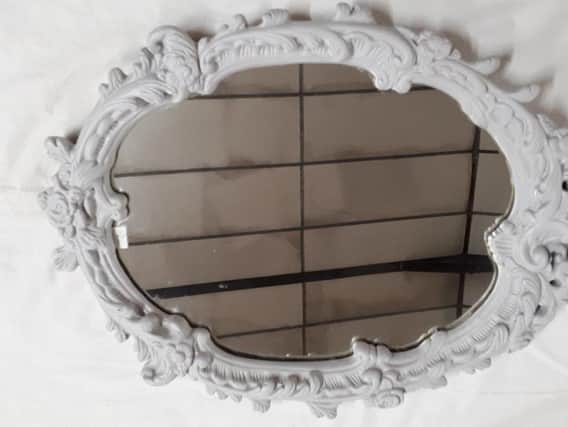Little valued mirrors from yesteryear now highly collectable


It’s that time of year when the days start getting longer... but it’s very hard to believe! So I thought we’d light up these dark winter days by looking into some gorgeous, decorative items which have been helping illuminate our rooms for centuries.
Had enough time to reflect? Let me “enlighten” you: it’s mirrors. These days we have plentiful electric light, but in the days of dim candles and smoky oil lamps, mirrors played an important role in reflecting precious light around the home.
Advertisement
Hide AdAdvertisement
Hide AdThe earliest manufactured mirrors found are polished stone, brass, and obsidian, a naturally occurring volcanic glass, from 6000BC; we’ve liked to look at ourselves for a long time!
Scratch-resistant and smooth, when backed with metal, glass reflections produce very little blur. According to the Roman scholar Pliny, people began making metal backed glass mirrors as early as the 1st century AD.
For centuries glass mirrors were available only to the rich, and a sign of status. Most people made do with solid steel mirrors right up until the late 19th century. Little valued, these once abundant metal mirrors are now rare, and can be highly valuable.
Georgian and Regency revellers used mirrors to reflect candlelight sufficient for banquets and balls; think Jane Austen! You can still find beautifully crafted or moulded surrounds in every type of wood, metal, plasterwork and gilding; and prices to match.
Advertisement
Hide AdAdvertisement
Hide AdPremier craftsmen have distinct styles: Chippendale mirrors are intricate with “ears” and fretted scrolls, Hepplewhite favoured oval glass, whilst convex mirrors are associated with Sheraton, and the Neoclassical architect Robert Adam was lauded for his elegant mirror designs.
It’s acceptable that older mirror glass can appear yellow or grey, indeed too clear glass can be a modern replacement.
Wooden antique mirror frames are most likely to be made from durable wood such as oak, mahogany or walnut which age well; small imperfections will not affect the value substantially.
Louis 14th’s stunning 220ft long Mirror Gallery in Versailles is embellished with 306 huge mirrors.
More modestly, these “magic glasses” continue to bring light and a little bit of enchantment to our rooms, hallways and alcoves; Jane Austen would approve!